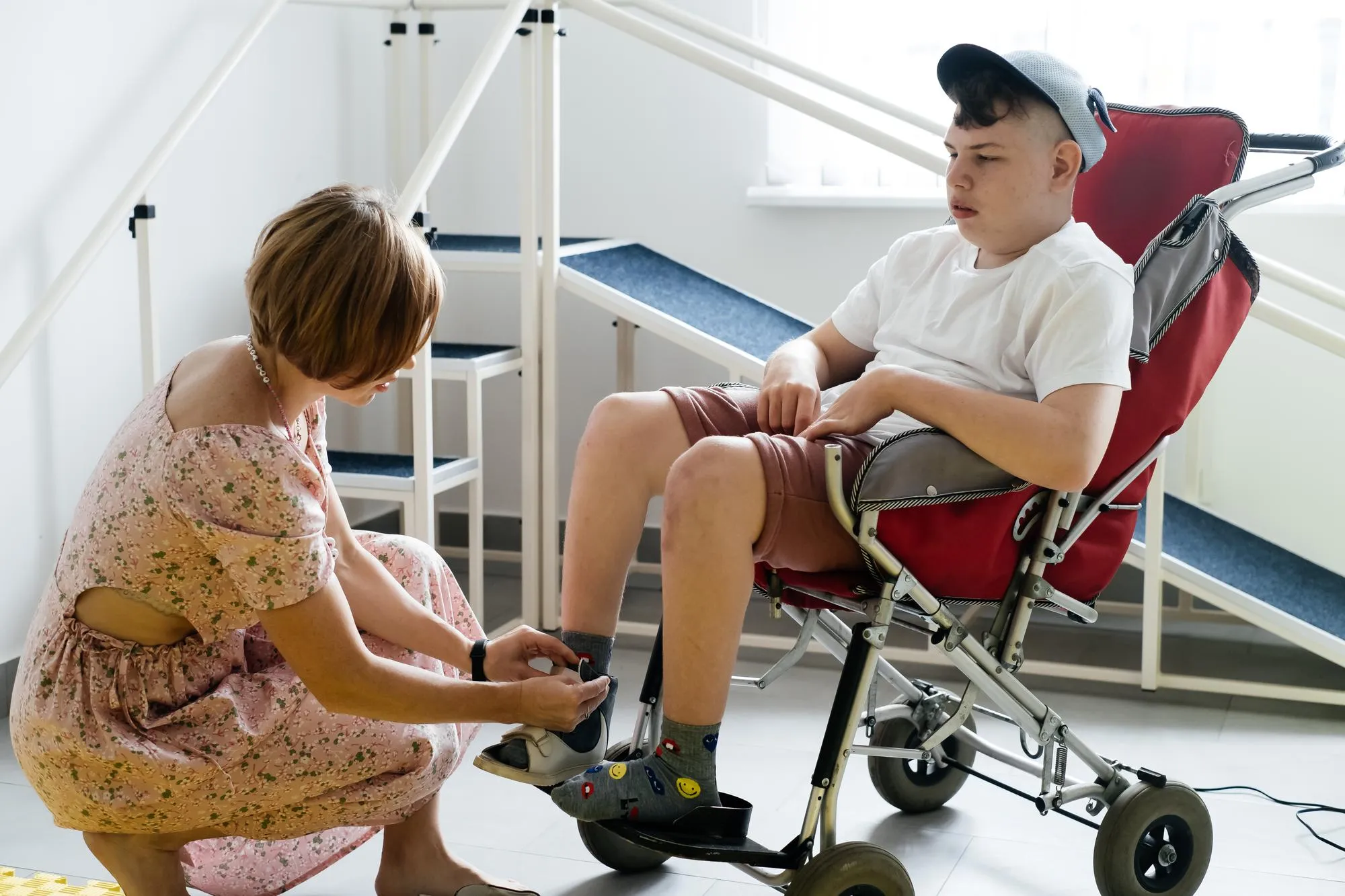Keywords
1. Cerebral Palsy
2. Young Adult Participation
3. Interpersonal Relationships
4. Childhood Predictors
5. Long-Term Outcomes
The trajectory into adulthood for individuals with cerebral palsy (CP) is composed of various challenges and successes. A recent prospective cohort study published in “Disability and Rehabilitation” sheds light on how childhood factors can predict the degree of participation in domestic life and interpersonal relationships for young adults with CP. This research emphasizes the importance of early interventions and family dynamics in shaping long-term outcomes for those living with CP.
Background
Cerebral palsy is a group of permanent movement disorders that appear in early childhood. Symptoms include poor coordination, stiff muscles, weak muscles, and tremors. There may also be problems with sensation, vision, hearing, swallowing, and speaking. Often, muscles are shortened and in a fixed position.
Study Aims
Authors Marloes M. van Gorp, Marij E. Roebroeck, Mirjam M. van Eck, Jeanine M. Voorman, Jos W.R. Twisk, Annet A. Dallmeijer, and Leontien van Wely sought to identify which childhood factors could predict participation outcomes in the domains of domestic life and interpersonal relationships for youths with cerebral palsy as they transition to adulthood.
Materials and Methods
The study was conducted following a prospective cohort design, wherein individuals diagnosed with CP were followed over time. Data were collected from various sources, including self-reported measures, caregiver information, and clinical assessments during childhood. Participation outcomes in adulthood were measured using two domains from the Participation and Activities Inventory for Adults with Cerebral Palsy, focusing on domestic life and interpersonal relationships.
Results
The study indicated that higher Gross Motor Function Classification System (GMFCS) levels during childhood (indicating more severe motor impairments) predicted lower participation in domestic life. Cognitive function during childhood also surfaced as a significant predictor, where better cognitive abilities were associated with higher adult participation in both domestic life and interpersonal relationships.
A surprising result of the study was that communication abilities during childhood were not related to later participation in domestic life but were related to participation in interpersonal relationships. This finding highlights the complex and nuanced nature of predictors of adult outcomes for individuals with CP.
Conclusions
The study concludes that childhood motor and cognitive functions are critical predictors of participation in domestic life and interpersonal relationships in young adults with CP. It suggests that identifying these factors early on can enable healthcare providers, families, and educators to tailor interventions that support better long-term outcomes.
Implications and Future Research
This study’s findings have important implications for early intervention programs, family-based strategies, and educational planning. Future research should focus on longitudinal studies to track the progress of interventions and explore additional factors that contribute to participation in adulthood for individuals with CP.
References
1. van Gorp, M., Roebroeck, M. E., van Eck, M., Voorman, J. M., Twisk, J. W. R., Dallmeijer, A. A., & Van Wely, L. (2020). Childhood factors predict participation of young adults with cerebral palsy in domestic life and interpersonal relationships: a prospective cohort study. Disability and Rehabilitation, 42(22), 3162–3171. https://doi.org/10.1080/09638288.2019.1585971
2. World Health Organization. (2001). International Classification of Functioning, Disability and Health. Geneva: World Health Organization.
3. Odding, E., Roebroeck, M. E., & Stam, H. J. (2006). The epidemiology of cerebral palsy: incidence, impairments and risk factors. Disability and Rehabilitation, 28(4), 183-191. https://doi.org/10.1080/09638280500158422
4. Beckung, E., & Hagberg, G. (2002). Neuroimpairments, activity limitations, and participation restrictions in children with cerebral palsy. Developmental Medicine & Child Neurology, 44(5), 309-316. https://doi.org/10.1017/s0012162201002122
5. Petterson, B., Donnelly, M., & Donkor, A. (2007). The Disability and Health Journal is published by the American Association on Health and Disability. Disability and Health Journal, 1(1), 7-17. https://doi.org/10.1016/j.dhjo.2007.11.001
Author Information
Marloes M. van Gorp, MSc, is associated with the Department of Rehabilitation Medicine, Amsterdam Movement Sciences, Amsterdam UMC, Vrije Universiteit Amsterdam, and the Department of Rehabilitation Medicine, Erasmus MC University Medical Center, Rotterdam.
Marij E. Roebroeck, PhD, is a senior researcher also associated with the Department of Rehabilitation Medicine, Erasmus MC University Medical Center, and Rijndam Rehabilitation, Rotterdam.
Remaining Author Contributions
Mirjam M. van Eck, Ph.D., is found at the Department of Rehabilitation Medicine, Amsterdam Movement Sciences, and HU University of Applied Sciences, Utrecht.
Jeanine M. Voorman, MSc, contributes through the Department of Rehabilitation, Physical Therapy Science & Sports, Brain Center Rudolf Magnus, University Medical Center Utrecht, Wilhelmina Children’s Hospital, Utrecht University, and the Center of Excellence for Rehabilitation Medicine, Brain Center Rudolf Magnus, University Medical Center Utrecht, Utrecht University, and De Hoogstraat Rehabilitation, Utrecht.
Jos W.R. Twisk, Ph.D., is from the Department of Epidemiology and Biostatistics, EMGO Institute for Health and Care Research, Amsterdam UMC, Vrije Universiteit Amsterdam.
Annet A. Dallmeijer, Ph.D., and Leontien van Wely, Ph.D., are both key contributors from the Department of Rehabilitation Medicine, Amsterdam Movement Sciences, Amsterdam UMC, Vrije Universiteit Amsterdam, plus the Department of Rehabilitation Medicine, Erasmus MC University Medical Center, Rotterdam.
As young adults with cerebral palsy navigate the demanding waters of social participation and domestic responsibility, this groundbreaking study provides a compass by identifying childhood factors that can predict their adult experiences. With the efforts of families, educators, and healthcare providers aligned toward optimizing these outcomes, individuals with CP can lead more involved and fulfilling lives.
